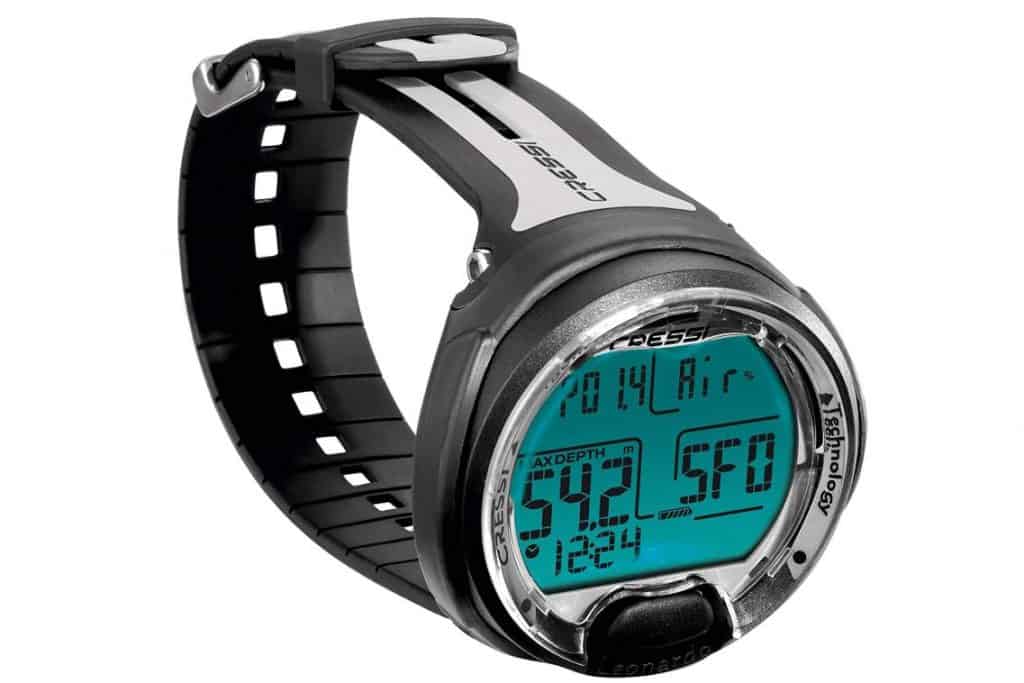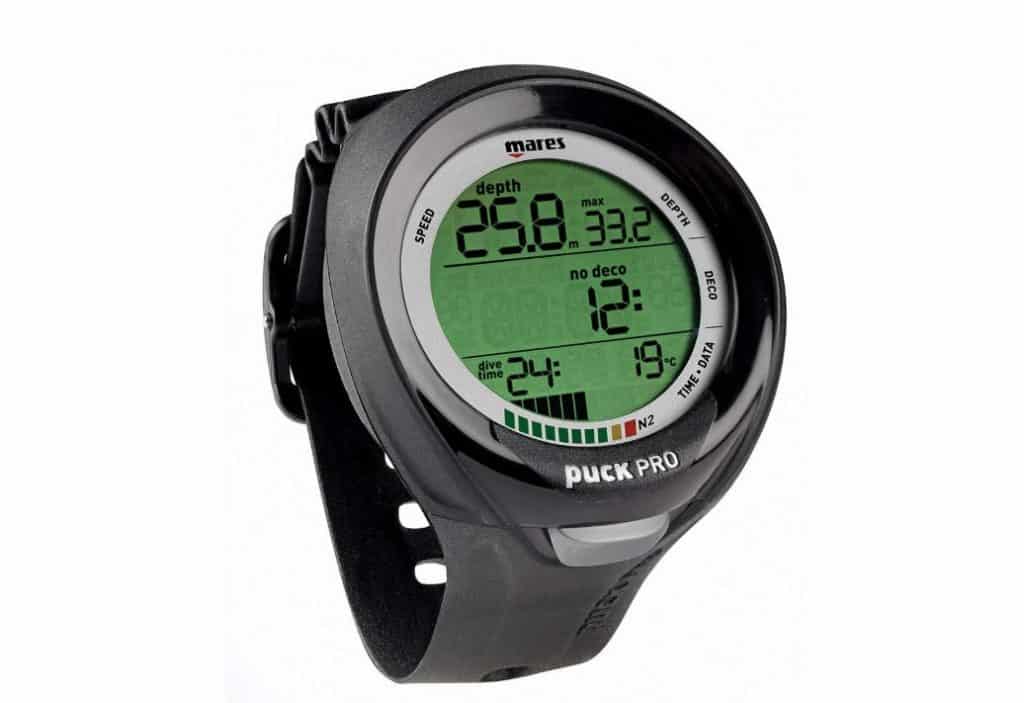
As you embrace the joys of being a certified diver, it doesn’t take long before you consider buying your own scuba gear. If you have already invested in basic diving gear such as a mask, fins, and snorkel, the next thing that usually comes to mind is getting a dive computer. Also referred to as a personal decompression computer or decompression meter, this piece of equipment allows you to check real-time dive information such as depth, time, and previous dive info through a display monitor. A dive computer is easy to use and more convenient to bring with you on your dive because it combines the functions of a depth gauge, timer, and sometimes, submersible pressure gauge (SPG).
You might be surprised to know that the dive computer dates back to the 1950s when the first analog versions were tested by the US Navy. However, it was only in 1983 when the first digital dive computer, capable of displaying the information on a monitor was released by a Swiss manufacturer called Hans Hass DecoBrain. Four years later, the Aladin Pro by UWATEC became a big hit in the market as divers favored the bulky grey box that could easily be strapped on the wrist during a dive. This innovative gadget uses the algorithms based on the theories of Albert Bühlmann, the godfather of decompression theory. By the 1900s, scuba diving became more popular as a leisure activity and more dive centers began offering affordable beginner and professional dive courses. The rising popularity of the sport encouraged manufacturers to come up with more innovative and budget-friendly equipment including dive computers. As the years passed, the dive tables became less and less popular and by 1997, the wrist-strapped dive computers became an essential piece of dive equipment. Many training agencies also adjusted to the changing times by incorporating the use of this equipment in their courses.
If you’re a beginner, it’s possible to rent personal decompression computers from selected dive centers but it might be harder to get rentals in some places. If you plan to dive several times a year and thinking of getting one for yourself, we’ve rounded up five top recommended dive computers (in no particular order) to help you select the ideal one that best suits your diving needs.

SUUNTO Zoop Novo Wrist Dive Computer – This model features four operating modes namely air, nitrox, gauge, and freediver with a maximum depth display of 100 meters. It is programmable for 21% to 50% oxygen mixtures and comes with a timer for air and nitrox modes plus an integrated apnea timer. Best-suited for entry-level divers, the SUUNTO Zoop Novo does not only monitor your descent and ascent but it warns you if you are moving too quickly. It comes with a backlit display screen that shows your air and nitrox levels on top, date, time, depth, and temperature. With several easy-to-press buttons, it’s a breeze to program this model. The SUUNTO Zoop Novo costs $299.95 on Amazon.

Aqua Lung i100 – This is another well-recommended beginner wrist-strapped dive computer that is noted for its user-friendly features and simple single-button operation; however, it does not come with a backlight. Like the previous model, this one also comes in air, nitrox, gauge, and freediver modes with a maximum depth of 100 meters. The Aqua Lung i100 can manage two gases and you can program the nitrox percentages between 21-100 percent. You have the option to buy the dive log software and cable so you can easily transfer dive logs to your dive computer. The Aqua Lung 1100 is being sold at $199.00 on Amazon.

Cressi Giotto Wrist Computer – It comes with a high definition 2.6-inch screen that can display up to a maximum of 120 meters with standard alarms and indicators. This model has two easy-to-navigate menus and capable of saving up to 70 hours or 60 dives. Its FDive program can process dive data, including decompression if applicable, for air or nitrox and equipped with full Nitrox management, depth gauge mode, and a reset option. It’s possible to download the data on your PC or Mac with the Cressi interface (additional purchase required). The price of the Cressi Leonardo on Amazon is S249.95.

Cressi Leonardo Scuba Dive Computer – If you’re after best value, this Cressi model is an ideal match for beginners looking for a more affordable option. It is as simple as it gets with a single button interface programming for air and nitrox. It has a high definition screen which makes it easy to read and comes with a maximum depth of 120 meters. Like the Cressi Giotto, it has 70 hours or 60 dives logbook memory. The Cressi Leonardo has audible alarms to promote underwater safety and noted for long battery life. You can easily reset it after each dive so it’s possible to share it with someone who doesn’t have one. You can get the Cressi Leonardo for only $199 on Amazon.

Mares Puck Pro+ – This newest entry-level to the Puck series comes in a slimline case with a single button under the face for easy operation and backlight. It is compatible with air and nitrox and you can program it to higher oxygen percentages of up to 99 percent. Its maximum depth is 150 meters and comes with a logbook capacity of up to 35 hours which you can download to a PC or Mac using an optional USB interface and the free-to-download software. The Mare Puck Pro+ sells at $249.95 on Amazon. When choosing a dive computer, consider a dive computer that works well with your current equipment setup and matches your dive style. Don’t hesitate to ask your dive center for suggestions; if you’re in UAE, you can visit our dive shop in Dubai and we’ll gladly assist you with your diving needs.
Experiences
Find the perfect escape
© 2024 NEMO DIVING CENTER
Scuba diving is an exciting and adventurous water sport that offers a chance to explore the beauty of the underwater world and its amazing marine life. The UAE, particularly Dubai, is one of the most popular destinations for scuba diving, attracting divers from all over the world. With its crystal clear waters and diverse marine life, scuba diving in Dubai offers a unique and unforgettable experience.
The cost of scuba diving in Dubai varies depending on the dive center you choose and the type of dive you opt for. On average, a single dive can cost anywhere from AED 250 to AED 550, with the average price for a single dive being around AED 350. This price usually includes all the necessary equipment, such as the dive tank, regulator, and wetsuit, as well as the services of a professional dive guide. At Nemo Diving Center, We offer a wide range of diving packages to suit every budget and experience level.
Diving in Dubai is an incredible experience, and the UAE is home to many dive sites teeming with amazing marine life including colorful soft and hard corals, sea turtles, stingrays, manta rays, moray eels, cuttlefish, octopus, nudibranchs, seahorses, and a plethora of fish species. It is also noted for its incredible dive wrecks that have become rich artificial reefs. These dive sites offer a unique and exciting diving experience, providing a chance to explore sunken ships and other structures that have become havens for marine life.
Come and explore the unique underwater world of Palm Jumeriah in Dubai and incredible dive sites in Fujairah such as Dibba Rock, Sharm Rock, Martini Rock, Snoopy Island, and more. At Nemo Diving Center, we offer dive trips to these amazing dive sites, allowing divers to discover the incredible marine life that has made the wreck its home. We also offer a wide range of other dive sites to choose from, including shallow coral reefs, deep wrecks, and drift dives, providing something for every level of diver.
In conclusion, scuba diving in Dubai offers an unforgettable experience for all levels of diver. With its clear waters, diverse marine life, and incredible dive sites, Dubai is a must-visit destination for any scuba diver. Whether you’re a beginner or an experienced diver, our team at Nemo Diving Center will ensure that you have an amazing time exploring the beauty of the underwater world.
Click one of our contacts below to chat on WhatsApp
Social Chat is free, download and try it now here!
